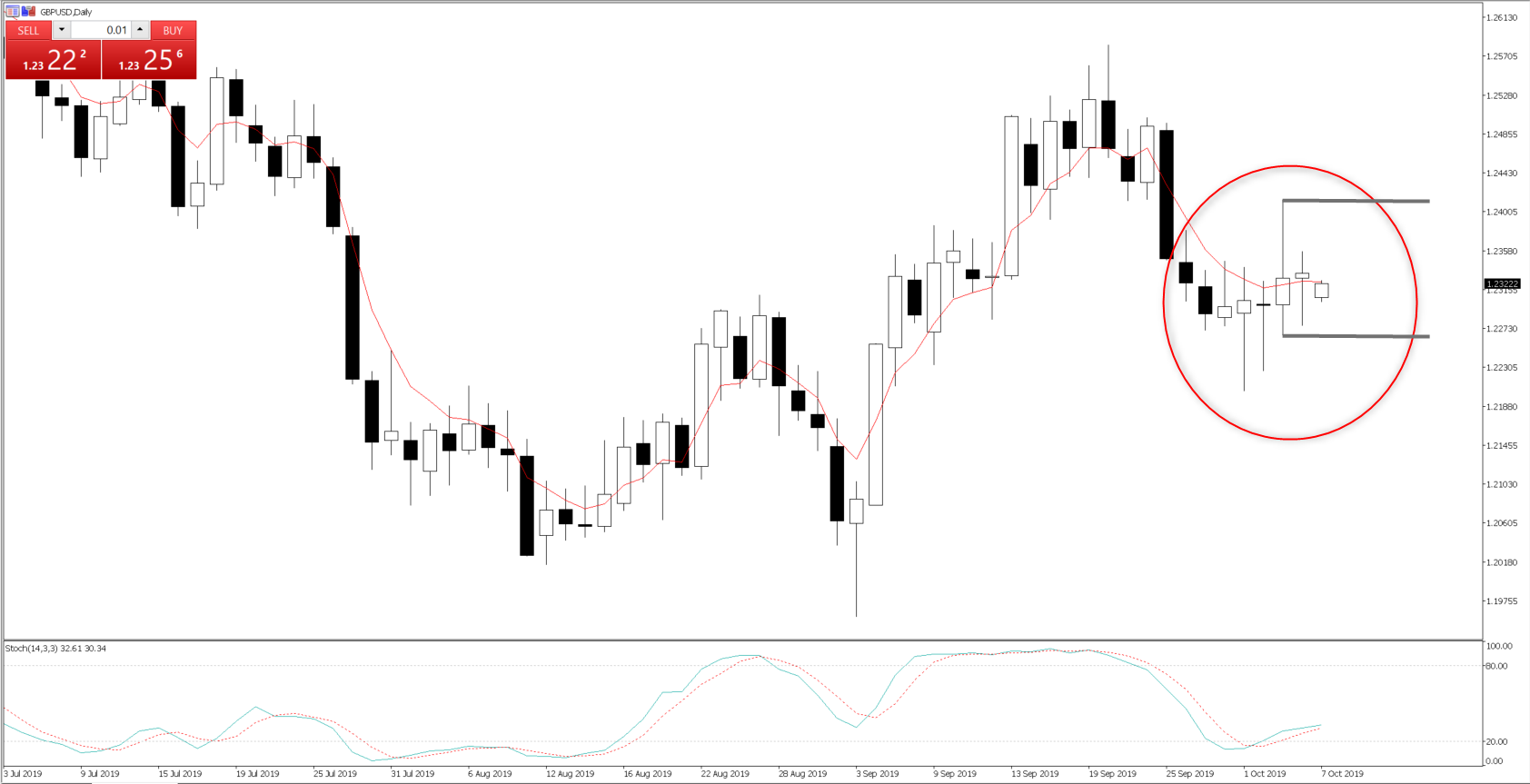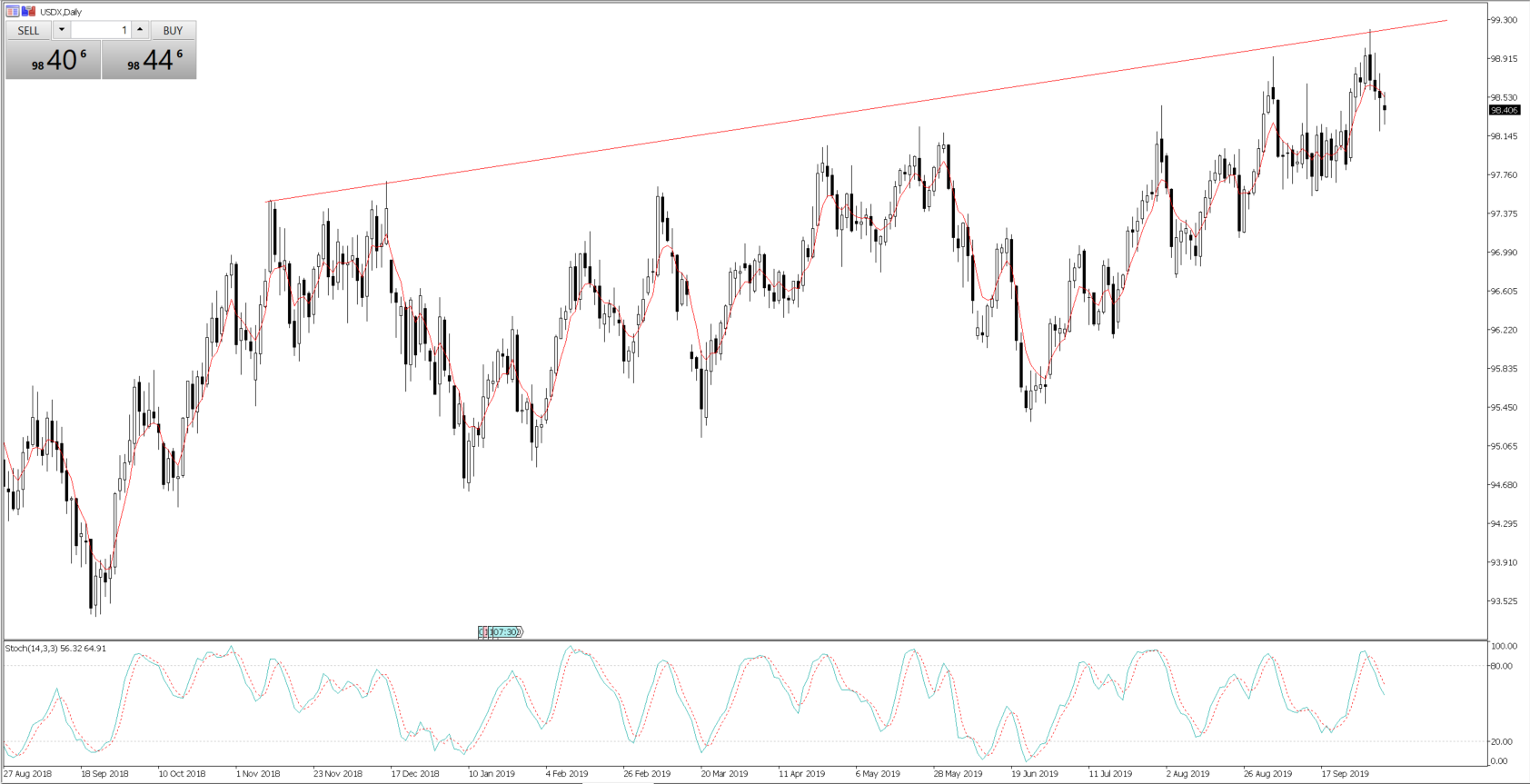Share Daily Fix: A big week of trading headlines

Comments from Federal Reserve Governor Jerome Powell, Atlanta Fed President Raphael Bostic, and Boston Fed President Eric Rosengren were largely constructive even if they didn’t offer any new information, while we heard optimistic comments about this week’s US-China trade negotiations from the White House. But what’s important here is that equities flew, with the S&P 500 closing Monday’s gap (low) at 2938 to round out the session +1.4% at 2952. I’d been looking to fade the move into 2938 but held off given the bullish tape and the fact breadth was so strong (89 of stocks closed higher). That said, we still saw defensive sectors outperforming cyclical, while small caps underperformed large caps.
Trade talks to dominate
I’ll look more closely at how price reacts into 2970 (the ST downtrend), although in the near term it’s about prepositioning for the barrage of headline risk due through the week. And they’ve started in earnest, with headlines on the wires this morning that China is “narrowing the scope for a trade deal with the US ahead of talks,” in turn putting some upside into USDCNH, although liquidity is poor and China/Hong Kong are off again today. The slight hit to risk has seen pressure on USDJPY pulling back 30 pips from 107.00 on the retail FX open, with AUDJPY and NZDJPY lower by around 0.3%, while the CHF is also working nicely against the China FX proxies. One’d expect S&P 500 and crude futures to open around 0.3% lower here (gold up), and this may be a modest headwind to our constructive opening calls for Asian equity markets.
Let’s see how this plays out. There isn’t, however, a huge amount to work within these headlines, and it does play into the big question of the week. Will the high-level talks between US-China principal negotiations (10 – 11 October) result in a delay to the implementing of the USD $250bn tariffs? USDCNH is our guide this week, then. Should we feel tariffs are to be delayed, then USDCNH should gravitate towards the 13 September low of 7.0312, although I’d be a willing buyer into here. On the other hand, if the feel is that talks break down, we see no meaningful convergence, and today seems more about setting low expectations, then we could see a move into 7.15. That could weigh on the AUD and NZD.
Brexit talks getting ever closer to the end game
We’ve also seen some interest in GBP, with the Cable lower by 20bp or so on the FX reopen. On the one hand, you have UK Prime Minister Boris Johnson maintaining a hawkish line with the European Union, detailing he’ll take the UK out of the EU without a deal. We also have French PM Emmanuel Macron suggesting that the EU would let their position known on a Brexit accord by the end of this week, while the Finnish Premier Antti Rinne sees no solution in place for the deadline of 31 October. GBPUSD one-week implied vol is up a touch here at 9.01%, but I’d expect this closer to 10% as we head towards the UK open, while one-month vols should move higher after falling on Friday.

A simple look at the GBPUSD daily chart shows two inside days and clear indecision from traders. Which way this goes is obviously yet to be seen. And although the trend to part unwind no-deal Brexit hedges has been in play, we’re clearly coming into the twilight zone and the prospect of some punchy moves in price — one for the bravest of souls.
Trading the USD
Looking at the USD index more broadly (see below), we can see the USD has pulled back a touch from the trend resistance and the trend highs seen on 1 October. There’s now so much focus on the Fed’s balance sheet, the idea that it could be expanding at a month clip of USD $15bn - 20bn, and what does that do to the USD. Perhaps this notion will be explored in the FOMC minutes (10 October) and again in one of Powell’s two speeches (9 and 10 October). Watch gold and whether we can hold USD $1,500.
The odds of an October cut (from the Fed) sit at 73%, which seems fair considering we have 20 days until the Fed meeting. This week’s core CPI print is the key data point this week and could influence, with the market expecting 0.2% MoM, for 2.4% YoY, while traders have a strong focus on inflation expectations, with US and EU five inflation expectations looking quite precarious. But the main game in town is trade, and we’ll be trading headlines again this week.

The material provided here has not been prepared in accordance with legal requirements designed to promote the independence of investment research and as such is considered to be a marketing communication. Whilst it is not subject to any prohibition on dealing ahead of the dissemination of investment research we will not seek to take any advantage before providing it to our clients.
Pepperstone doesn’t represent that the material provided here is accurate, current or complete, and therefore shouldn’t be relied upon as such. The information, whether from a third party or not, isn’t to be considered as a recommendation; or an offer to buy or sell; or the solicitation of an offer to buy or sell any security, financial product or instrument; or to participate in any particular trading strategy. It does not take into account readers’ financial situation or investment objectives. We advise any readers of this content to seek their own advice. Without the approval of Pepperstone, reproduction or redistribution of this information isn’t permitted.